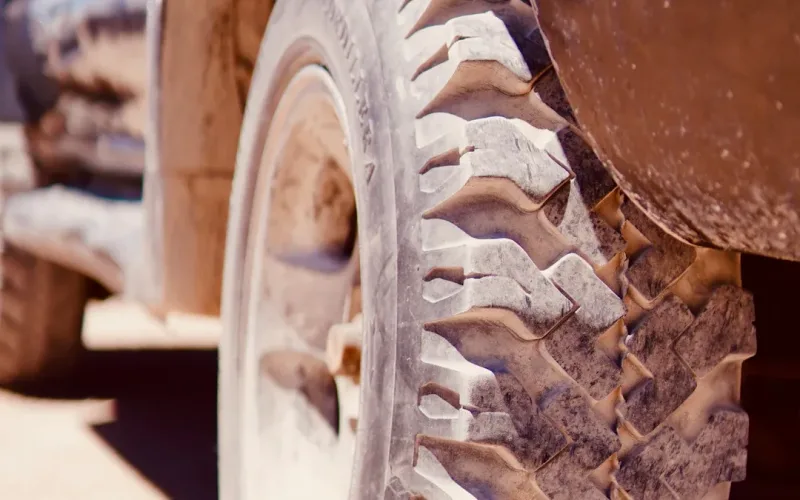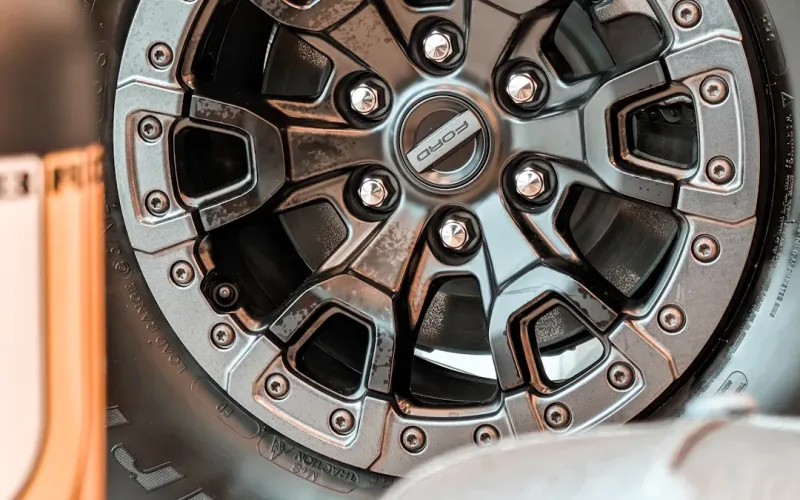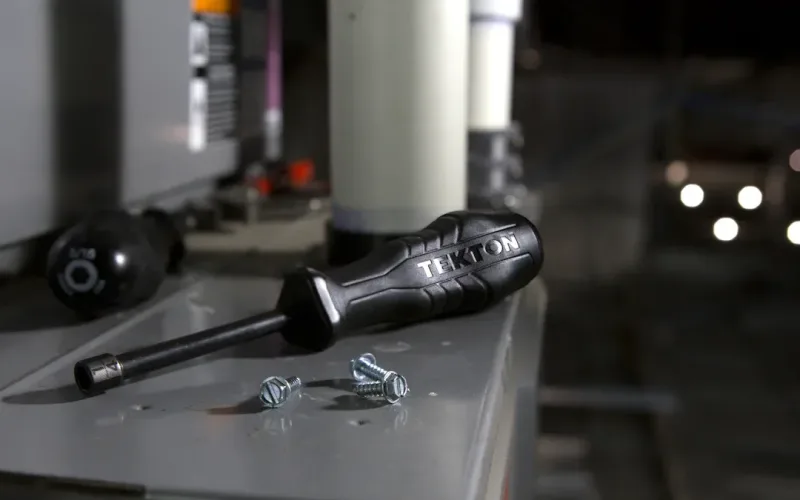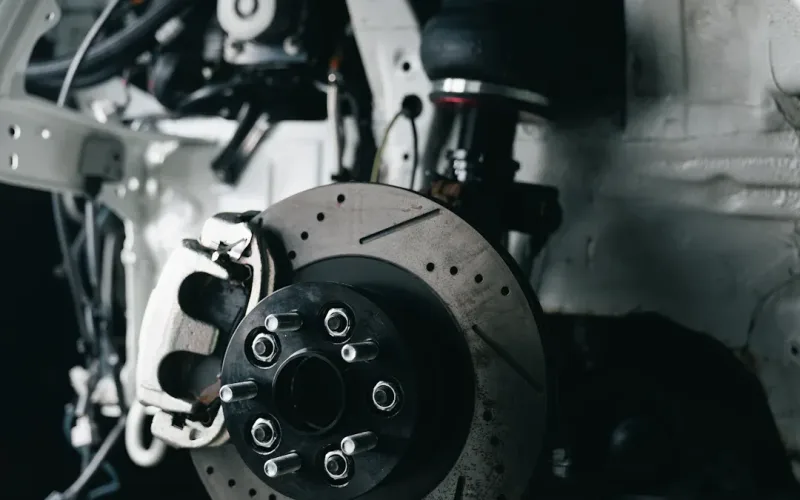

admin1
July 16, 2025
Wheel Valve Stem Stories Real Choices for Real Drivers
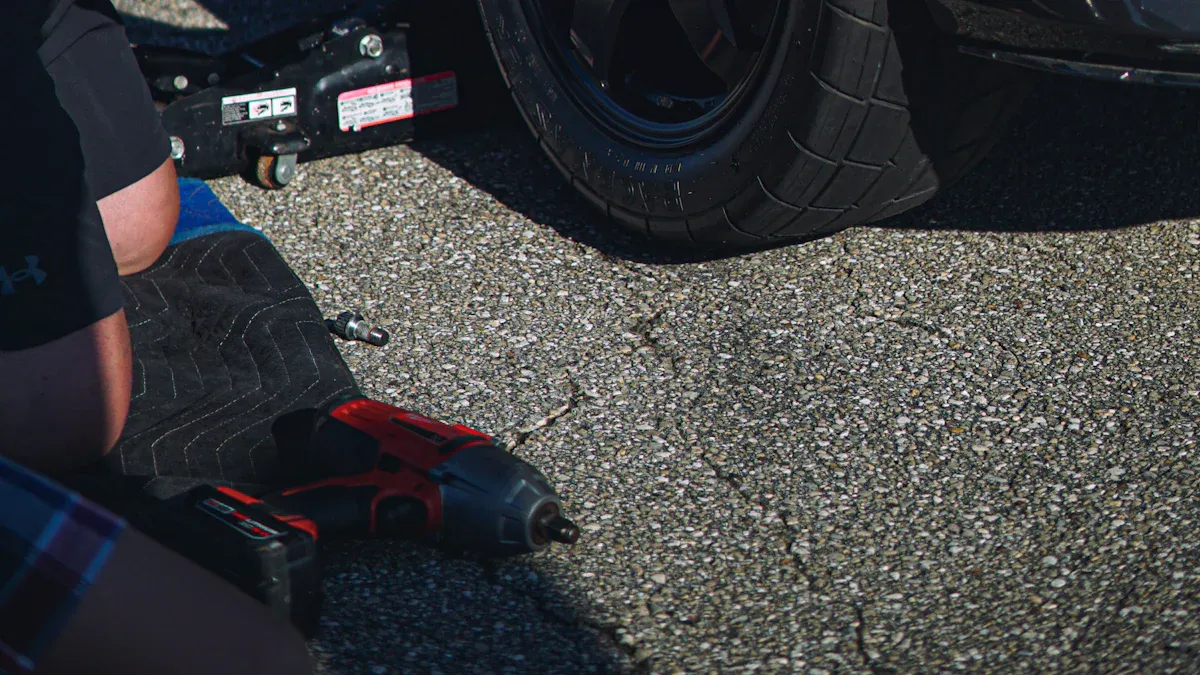
When you choose a wheel valve stem, you face real options that match your driving needs. You can find several types of tire valve stems, each with unique features. For example, rubber snap-in stems suit most passenger vehicles and handle tire pressure up to 65 psi. High-pressure metal clamp-in stems work best for trucks and off-road vehicles, managing pressures up to 200 psi. The angle and rim hole size also matter. A 45-degree valve stem fits heavy trucks, while motorcycles often use a 90-degree stem. Picking the right tire valve stem helps you keep tire pressure steady, improves safety, and saves on long-term costs.
| Tire Valve Stem Type | Typical Vehicle Application | Maximum Cold Inflation Pressure | Key Features and Notes |
|---|---|---|---|
| Rubber Snap-In Valve | Passenger cars, light trucks, light trailers | Up to 65 psi | Fits .453″ or .625″ rim holes; plastic or metal caps; suitable for autocross and standard use. |
| High-Pressure Snap-In Valve | Medium and heavy-duty trucks, trailers | 80 psi (.453″ hole), 100 psi (.625″ hole) | Thicker rubber base with metal barrel; used mostly in steel wheels; lengths 1-1/4″ to 2″. |
| High-Pressure Metal Clamp-In Valve | Heavy trucks, racing, off-road, high-speed vehicles | Up to 200 psi | Uses rubber grommet and retaining nut; fits various rim hole sizes; recommended for speeds >130 mph. |
Tire Valve Stem Types Explained
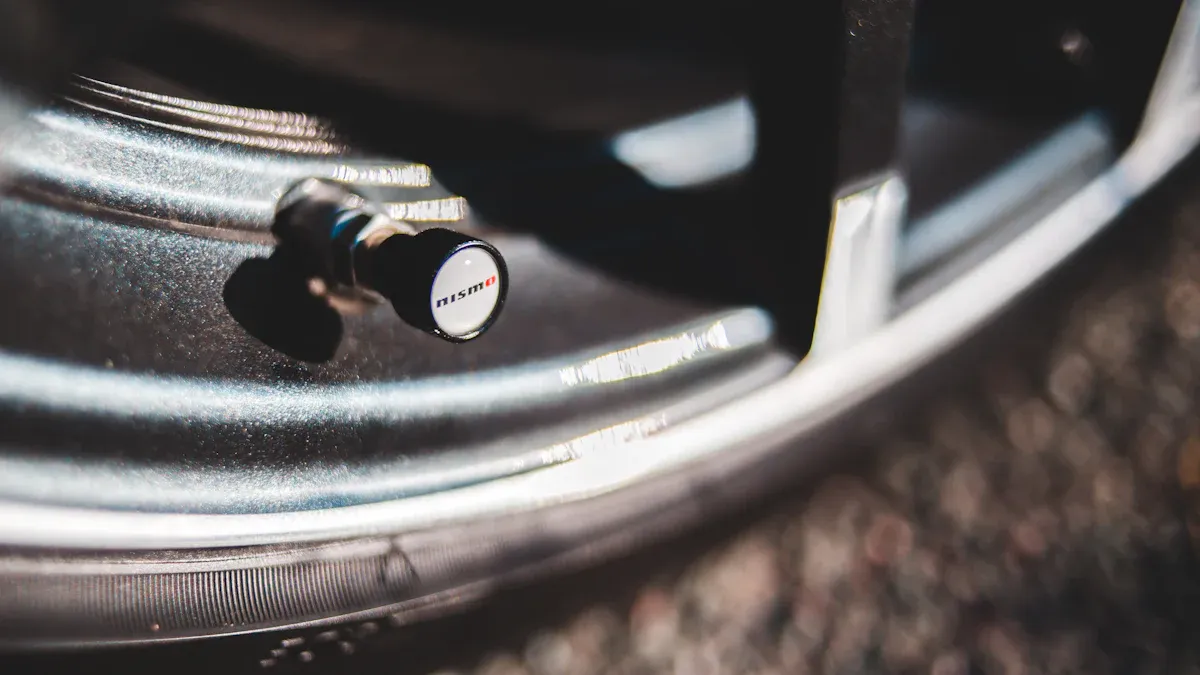
Rubber Snap-In Tire Valve Stem
You will find rubber snap-in tire valve stems on most passenger cars and light trucks. These stems use a flexible rubber body that fits snugly into the rim hole. You can install them easily by hand or with a simple tool. Most rubber snap-in stems handle tire pressures up to 65 psi. Under normal driving conditions, you can expect a lifespan of about 4 to 5 years. This makes them a reliable choice for daily driving. The rubber construction helps absorb minor impacts and resists cracking from temperature changes. If you want a cost-effective and easy-to-replace option, this type of tire valve stem works well for standard vehicles.
Tip: Replace your rubber snap-in tire valve stem every time you change your tires to prevent leaks and maintain safety.
Metal Clamp-In Tire Valve Stem
Metal clamp-in tire valve stems use a metal body and a rubber grommet to seal tightly against the rim. You secure them with a retaining nut. These stems offer extra strength and durability. You often see them on luxury vehicles, aftermarket rims, and cars that travel at high speeds. Metal clamp-in stems are common on Asian and European vehicles. They work best when you need a high-performance valve stem for speeds over 130 mph or for racing. Many drivers choose them for their adjustable fit and stylish look.
- Metal clamp-in stems are recommended for:
- Track day or racing scenarios
- High-performance driving
- Luxury vehicles and aftermarket rims
You should know that high-pressure metal clamp-in valves can resist more force and temperature changes than rubber stems. They also provide a secure seal, which helps prevent air leaks during demanding driving.
High-Pressure and Specialty Tire Valve Stem
Some vehicles need a high-pressure valve stem for extra safety and performance. Trucks, RVs, and industrial vehicles often use these stems. High-pressure and specialty tire valve stems use strong materials like nickel-plated brass or stainless steel. These materials prevent corrosion and ensure a tight seal. High-pressure metal clamp-in valves combine a metal body with a rubber grommet for extra durability.
| Valve Stem Type | Pressure Rating Supported | Typical Applications | Key Features and Materials |
|---|---|---|---|
| Metal Valve Stem | Up to 65 psi (some up to 200 psi) | General use, more durable than rubber stems | Metal (nickel-plated brass), durable, corrosion-resistant |
| High-Pressure Valve Stem | Higher than 65 psi | Trucks, RVs, high-performance vehicles, industrial | Clamp design, brass or stainless steel, prevents air leaks |
You may also see high-performance valve stems in racing or off-road vehicles. These types of tire valve stems help maintain air pressure even under extreme conditions. If you drive a heavy-duty or high-speed vehicle, you should choose a high-pressure or high-performance valve stem for the best results.
TPMS-Compatible Tire Valve Stem
You may have seen the letters TPMS on your dashboard. TPMS stands for tire pressure monitoring system. This system helps you keep track of your tire pressure while you drive. To work correctly, your vehicle needs a special type of tire valve stem that can hold a sensor inside the tire.
TPMS-compatible tire valve stems look similar to regular stems, but they have important differences. These stems must fit the sensor that measures air pressure. You will find two main types: metal clamp-in and rubber snap-in. Each type uses a different method to seal the rim and connect the sensor.
Here are some ways TPMS-compatible stems differ from standard tire valve stems:
- TPMS-compatible stems hold a sensor inside the tire, while standard stems only keep air in the tire.
- These stems use nickel-plated valve cores. This prevents corrosion, which can happen when metal parts touch each other inside the wheel.
- The metal clamp-in type uses a nut and grommet to seal tightly. The rubber snap-in type uses a flexible body, but both must fit the sensor perfectly.
- You must tighten all parts of a TPMS-compatible tire valve stem to the correct level. If you do not, you could lose air or get wrong pressure readings.
- Standard stems do not have sensors or special cores. They only vary by pressure rating and vehicle type.
- The sensor and the tire valve stem must match. If they do not, you might lose air or get a warning light on your dashboard.
Tip: Always check that your replacement tire valve stem is marked as TPMS-compatible. This helps your tire pressure monitoring system work properly and keeps you safe on the road.
A TPMS-compatible tire valve stem gives you peace of mind. It helps your car’s tire pressure monitoring system send accurate data. You can drive with confidence, knowing your tires are at the right pressure.
How to Choose the Right Wheel Valve Stem
Matching Tire Valve Stem Types to Vehicle Type
Choosing the right tire valve stem for your vehicle starts with understanding your vehicle’s needs. Each type of vehicle—passenger car, truck, or motorcycle—requires a specific stem length, angle, and pressure rating. You want to match these features to your vehicle for the best performance and safety.
Here is a table that helps you compare the main factors for different vehicles:
| Factor | Passenger Cars | Trucks (Heavy-Duty) | Motorcycles |
|---|---|---|---|
| Stem Length | 1.25 to 1.5 inches | 2 to 2.5 inches or longer | Around 0.88 inches |
| Stem Angle | Straight | 45-degree angled | Straight or 90-degree angled |
| Pressure Rating | Rubber stems up to 65 psi | Metal stems up to 200 psi | Rubber stems up to 65 psi |
| Rim Hole Diameter | 0.453 to 0.625 inches | Around 0.625 inches | Around 0.327 inches |
| Temperature Rating | -40°F to 180°F (rubber) | -65°F to 250°F (metal) | -40°F to 180°F (rubber) |
| Fit Importance | Proper fit to avoid leaks | Secure fit with valve stem tool | Avoid over-tightening |
| Inspection Tips | Check for cracks and leaks | Inspect for corrosion and wear | Look for damage from elements |
| Installation Tips | Ensure correct seating | Use valve stem tool for secure fit | Avoid over-tightening |
Manufacturers and industry standards also guide you in selecting the right tire valve stem. For example, passenger cars and light trucks often use rubber snap-in valves, which handle tire inflation pressures up to 65 psi. Heavy-duty trucks need high-pressure metal clamp-in valves, which can manage much higher tire inflation pressures. Motorcycles require shorter stems and sometimes a 90-degree angle for easy access.
| Valve Type | Vehicle/Application | Max Inflation Pressure (PSI) | Hole Diameter (Inch) | Effective Length Range (Inch) |
|---|---|---|---|---|
| Rubber Snap-In Valves | Passenger cars, light trucks, light trailers, autocross competition | Up to 65 | 0.453 or 0.625 | 0.88 to 2.5 |
| High-Pressure Snap-In Valves | Medium and heavy-duty trucks, trailers | 80 (0.453″ hole) to 100 (0.625″ hole) | 0.453 or 0.625 | ~1.25 to 2.0 |
| High-Pressure Metal Clamp-In Valves | Track vehicles, high-speed vehicles (>130 mph), any wheel type | Suitable for very high pressures | Various | Various |
You should always check your vehicle’s manual or consult a professional if you are unsure. Using the correct wheel valve stem helps you avoid leaks and keeps your tire pressure steady.
Considering Driving Conditions and Tire Valve Stem Needs
Your driving conditions play a big role in choosing the right tire valve stem. If you drive in the city or on highways, a standard rubber snap-in stem usually works well. For off-road, high-speed, or heavy-load driving, you need a more durable option.
Here are some common issues and needs for different driving conditions:
- High-pressure valve stems are best for trucks and vehicles that carry heavy loads. These stems have special size and pressure ratings to handle the extra stress.
- Metal clamp-in stems are the top choice for racing or high-speed vehicles. You must install them with the correct torque to prevent leaks.
- Valve cores inside the stem keep the air sealed. Dirt, moisture, and sand can damage these cores, causing air leaks.
- If you use aluminum wheels, nickel-plated valve cores help prevent corrosion. Brass cores can corrode and damage both the valve and the wheel.
- Valve caps are not just for looks. They keep out moisture and dirt, which is especially important at high speeds.
- All valve stem parts—cap, core, and extension—work together to keep your tire pressure safe.
Incorrect tire valve stem selection or installation can lead to dangerous tire failures, especially when you drive fast or carry heavy loads. Air loss often happens when the stem does not fit the wheel hole properly. Corrosion and contamination can also cause leaks. Always use the right type for your driving needs, and make sure the fit is secure.
Tip: If you drive in harsh conditions, check your tire valve stems often for signs of wear, corrosion, or damage.
Tire Valve Stem Replacement and Maintenance Tips
Proper tire valve stem replacement and maintenance help you avoid sudden air loss and keep your tires in top shape. You should replace your tire valve stem every time you get new tires. Rubber stems can crack and weaken over time, even if they look fine. Metal clamp-in stems, especially those used in high-performance or track vehicles, should be replaced every two years because heat can affect their strength.
Follow these tips for the best results:
- Inspect your tire valve stem for cracks, leaks, or corrosion during every tire change or rotation.
- Replace the valve core if you see signs of rust or if it does not seal well.
- Always use a valve cap to protect the core from dirt and moisture.
- Make sure the new stem matches your wheel’s hole size and your vehicle’s tire inflation pressures.
- Use a valve stem tool to install metal clamp-in stems and tighten them to the recommended torque.
- For TPMS-equipped vehicles, use only stems marked as compatible to ensure accurate tire pressure readings.
- Educate yourself about the signs of valve failure, such as slow air loss or a warning light on your dashboard.
Note: Valve replacement is a simple step that can prevent costly tire damage and improve your safety on the road.
Regular tire valve stem replacement and careful maintenance help you keep your tire pressure at the right level. This extends tire life and improves your vehicle’s performance. When you choose the right wheel valve stem and care for it, you make a smart investment in your safety and your vehicle’s reliability.
Real Driver Stories: Tire Valve Stem Choices in Action

Common Mistakes with Tire Valve Stem Selection
You might think all tire valve stems work the same, but many drivers learn the hard way that this is not true. One common mistake is choosing a rubber tire valve stem for a vehicle that faces harsh conditions. Rubber stems are easy to replace and cost less, so you see them on most passenger cars. However, sunlight, extreme temperatures, moisture, and road salt can make rubber brittle and cause cracks. When this happens, you risk losing tire pressure quickly. This can affect your safety, handling, and even fuel efficiency.
Drivers who use their vehicles for heavy-duty work or in tough environments often need more durable options. Metal valve stems resist harsh weather and rough roads much better. If you drive a truck or use specialty rims, you benefit from the extra strength and reliability of metal stems. Some drivers ignore these needs and stick with rubber, leading to more frequent inspections and replacements. You should always match your tire valve stem to your driving environment to keep tire pressure steady and avoid sudden problems.
Note: Regularly check your valve stems for cracks or signs of wear. This simple habit can prevent dangerous drops in tire pressure.
Success Stories: The Right Tire Valve Stem for the Job
Many drivers have seen the benefits of choosing the right valve stem. Here are some real examples:
- A recall once involved 6 million rubber valve stems that cracked and failed, causing rapid air loss and tire blowouts. Drivers who switched to metal stems avoided these risks.
- An expert recommends metal valve stems for better safety. Metal stems do not crack as easily and help keep tire pressure stable.
- One driver shared a story where a rubber valve stem broke during a routine check. The tire lost air immediately, but the driver avoided a blowout by catching the problem early.
- Regular inspections and timely replacement of rubber stems help drivers avoid dangerous tire failures.
- Many drivers report improved tire reliability and performance after switching to metal stems or replacing old rubber ones.
You can see that the right choice of tire valve stem makes a big difference. When you use a stem that matches your vehicle and driving needs, you keep tire pressure at the right level. This helps you drive safely and get the best performance from your tires.
You have real choices when picking a wheel valve stem. Rubber snap-in stems work well for daily drivers and hold up to 65 PSI. Metal clamp-in stems fit performance vehicles and handle higher pressure. Always check your valve stems for cracks or leaks to prevent sudden air loss.
- Choose a valve stem that matches your vehicle’s pressure needs.
- Inspect stems often for damage.
- Use valve caps to stop corrosion.
- Ask a professional for help if you see damage or need a replacement.
Stay safe by choosing the right stem and keeping it in good shape.
FAQ
How often should you replace your tire valve stems?
You should replace your tire valve stems every time you get new tires. Rubber stems usually last 4 to 5 years. Metal stems can last longer, but you should check them for damage or corrosion during each tire change.
Can you reuse old valve stems when changing tires?
You should not reuse old valve stems. Old stems may have hidden cracks or wear. New stems help prevent air leaks and keep your tires safe.
What happens if you use the wrong type of valve stem?
If you use the wrong valve stem, you risk air leaks or sudden tire pressure loss. High-pressure vehicles need metal stems. Using a rubber stem on these vehicles can cause failure. Always match the stem to your vehicle’s needs.
Do all vehicles with TPMS need special valve stems?
Yes, vehicles with TPMS need TPMS-compatible valve stems. These stems hold the sensor inside the tire. Using a regular stem can cause the system to stop working or give false readings.
Why do valve stem caps matter?
- Valve stem caps keep dirt and moisture out.
- They protect the valve core from corrosion.
- Missing caps can lead to slow air leaks over time.
Tip: Always replace missing or damaged valve stem caps to protect your tires.
